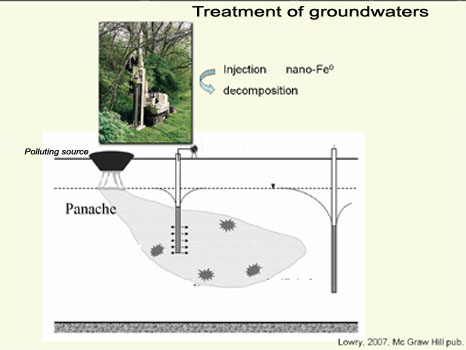
Iron nanoparticle depollution.
In the Nanofrezes project, in order to reduce the quantity of recalcitrant organic polluting present in groundwater, studies have concerned use of zero-valent iron nanoparticles. The dichloroethylene (DCE) and trichlorethylene (TCE) solvants, widely used as detergent and cleaning agent, contaminate groundwater. The treatment of polluted water with iron nanoparticles allows to transform TCE or DCE in less toxic compounds. To avoid physical interactions between nanoparticles and ions present in the sediment, the nanoparticle surface is modified by coating them, for example with polyacrylic acid.
According to these studies, it’s possible to obtain a significant injection radius while maintaining the reactivity of iron nanoparticles.
Regarding the ecotoxicity, the injection of 0,5 to 1 g/l nanoparticles induces a small danger for aquatic micro-organisms, negligible for 0,1 g/l. These iron nanoparticles change into non-toxic particles (iron oxide) after having degraded polluting.


